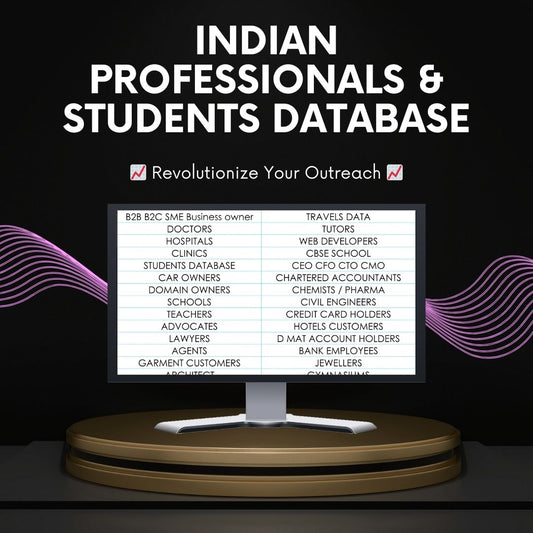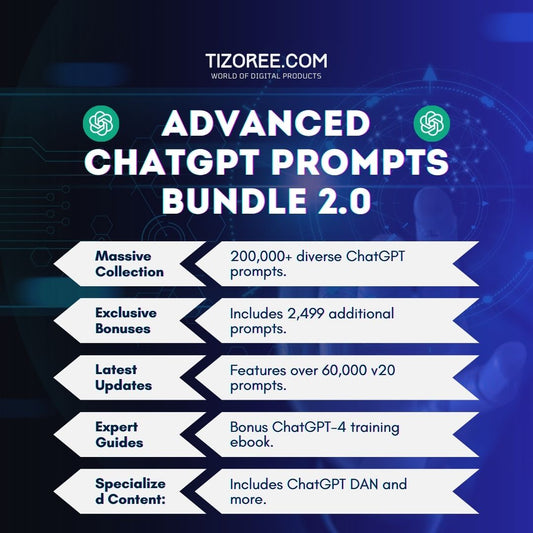Master SEO Content Creation with ChatGPT
Share
In the digital age, creating SEO-optimized content is essential for anyone looking to enhance their online presence. Whether you are a blogger, content writer, or copywriter, utilizing tools like ChatGPT can significantly streamline your content creation process.
Introduction to SEO Content Creation
This article walks you through the steps to generate high-quality, SEO-friendly content using ChatGPT.Getting Started with ChatGPT
The first step in creating SEO-optimized content is to access ChatGPT. If you don't have an account, you will need to create one. Once logged in, you can begin generating content effortlessly. Instead of spending countless hours on research and writing, ChatGPT allows you to produce a well-structured blog post quickly.
Generating a Blog Post
To generate a blog post, simply ask ChatGPT to write one and specify the topic. The AI will create content based on the information provided. If the initial output does not meet your expectations, you can request a rewrite to make it more engaging or informative.
Enhancing Content with AIPRM Extension
For more structured prompts and better results, consider using the AIPRM extension. This tool enhances ChatGPT's capabilities by providing a library of ready-made prompts tailored for SEO content writing. Installing the AIPRM extension in your browser can significantly improve the relevance and quality of the content generated.
Finding the Right Blog Title
The first step in creating a compelling blog post is to find an effective title. With the AIPRM extension, you can select a topic and use the "Blog Post Title Generator" prompt. Enter your topic, choose your desired language, tone, and writing style, and generate several potential titles.
- Choose a title with relevant keywords that will rank well on Google.
- Use the Google Keyword Planner to verify keyword effectiveness.
Generating Unique Content
After selecting the best title, the next step is to generate content for it. Copy the chosen title and paste it into ChatGPT, using a prompt designed to create human-like content. Once the content is generated, it’s crucial to ensure that it is unique.
Checking for Plagiarism
To verify the uniqueness of your content, utilize plagiarism detection tools. By pasting your content into a plagiarism checker, you can see how much of it is original. If any sections are flagged as duplicate, you can easily rewrite those portions using ChatGPT to achieve 100% uniqueness.
Publishing Your Blog Post
Once your content is unique and polished, it’s time to publish it on your WordPress site. Start by creating a new post, adding the title, and pasting the content into the editor. Make any necessary adjustments to enhance readability and aesthetics before hitting publish.
Optimizing for SEO
To ensure your blog post is fully optimized for SEO, install the Rank Math plugin on your WordPress site. This tool provides an SEO score for your post and offers suggestions for improvement. A higher score will increase your chances of ranking well in search results.
Improving Your SEO Score
After installing the plugin, you can view the SEO score of your content. If the score is low, follow the suggestions provided by Rank Math. Common recommendations include:
- Adding focus keywords to the title and meta description.
- Including images with appropriate alt text.
- Creating a table of contents to enhance navigation.
Utilizing Focus Keywords
Focus keywords are essential for guiding search engines and helping your content reach the right audience. Use ChatGPT to suggest focus keywords relevant to your blog title. Once you have your keyword, integrate it into your title and meta description to boost SEO effectiveness.
Meta Titles and Descriptions
Crafting compelling meta titles and descriptions is crucial for attracting clicks from search results. Use ChatGPT to generate these elements based on your blog title. Incorporate the focus keyword into both the title and description to further enhance your SEO.
Finalizing Your Blog Post
After making all the necessary changes and optimizations, update your blog post. Preview the final version to ensure everything appears correctly. This comprehensive approach to content creation and optimization will help you rank higher in search results and attract more visitors.
Updating Existing Content
What if you want to optimize a blog post that has already been published? You can still improve its SEO by rewriting sections with ChatGPT. Use the same methods to check for uniqueness and apply suggestions from Rank Math to enhance the content's performance.
Steps for Updating Posts
To update your posts, follow similar steps as when creating new content:
- Rewrite the article using ChatGPT.
- Check for plagiarism and ensure uniqueness.
- Implement SEO suggestions from Rank Math.
- Update the post with any new content and optimizations.
Conclusion
Creating SEO-optimized content with ChatGPT can save you time and enhance your online visibility. By following these steps—generating unique content, optimizing for SEO, and updating existing posts—you can effectively boost your website's performance. Embrace these tools and strategies to take your content creation to the next level.



